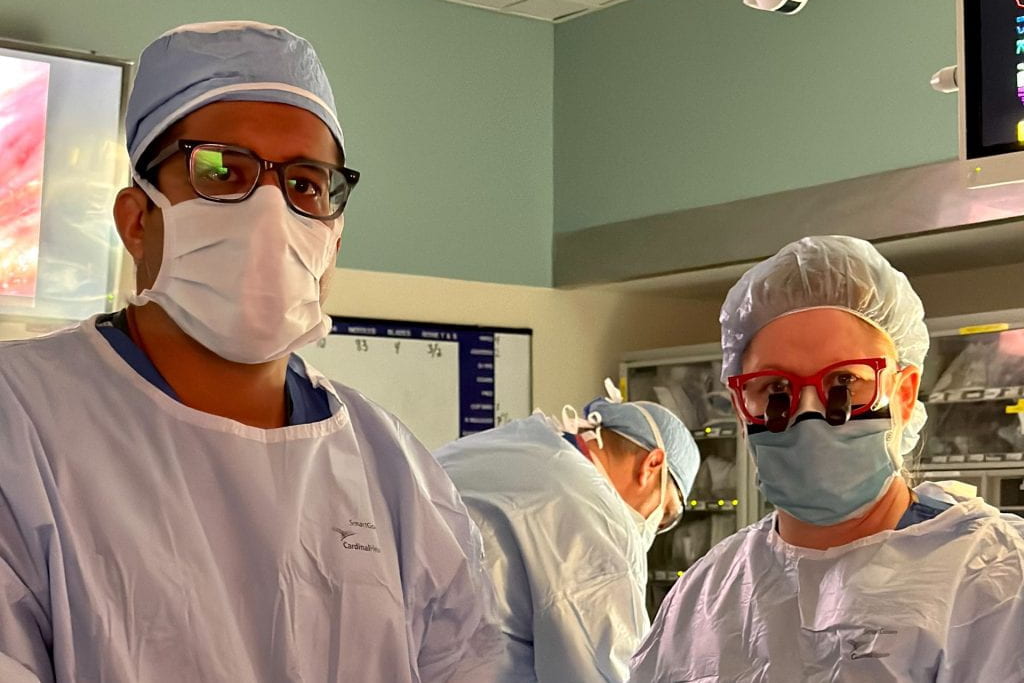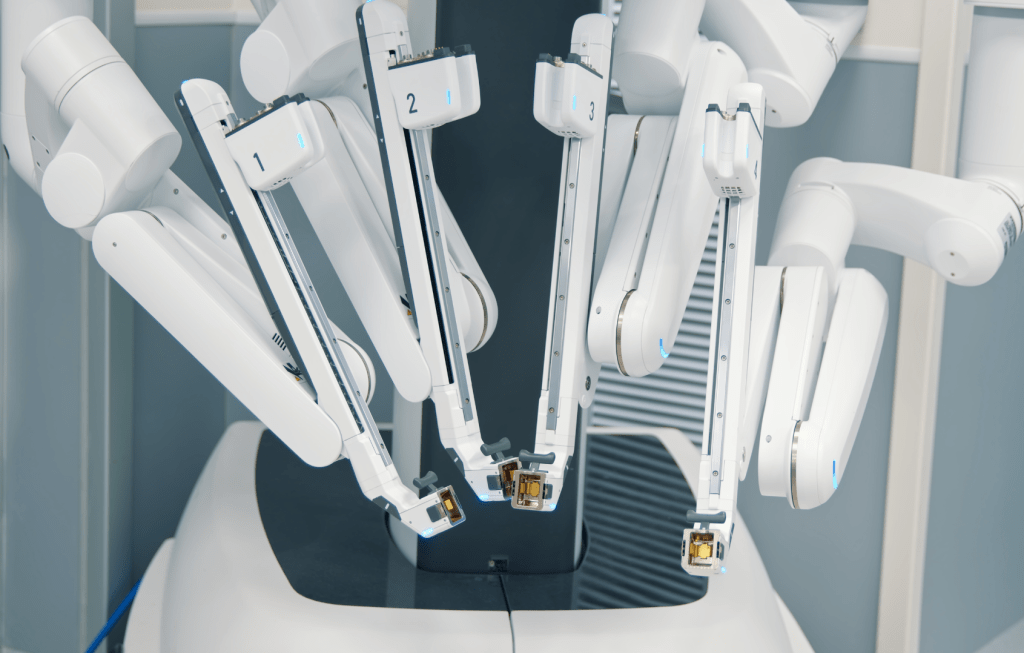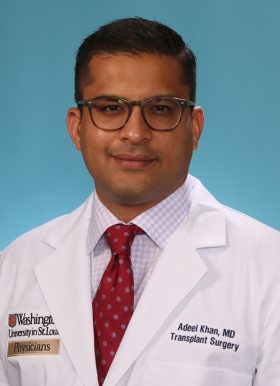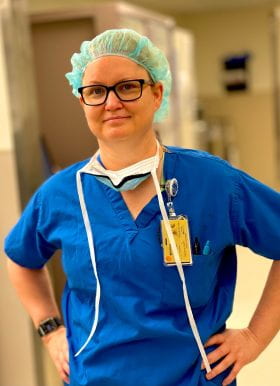Washington University in St. Louis and Barnes Jewish Hospital are home to the largest robotic transplant program in North America.
The Washington University robotic transplant program has gained a reputation as one of the leading robotic transplant and HPB programs both nationally and worldwide. Washington University transplant surgeons perform over 200 robotic cases a year. These include procedures for complex tumors of the liver, pancreas, and biliary system (including gallbladders), living donor surgery, and solid organ (kidney and liver) transplantation.
Robotic transplant surgeons are assisted in the operating rooms by a highly specialized dedicated robotic transplant team (DART) trained and led by a transplant resource nurse and perioperative clinical robotics educator.

Robotic Liver Transplant
In 2023, Washington University transplant surgeons successfully performed the first robotic liver transplant in North America in a patient with chronic liver disease and liver cancer (hepatocellular carcinoma). This was the first time in world history where a robotic liver transplant was performed utilizing a liver graft from a deceased donor.
During robotic surgery, the surgeon is in the operating room with the patient, controlling a surgical robot from a console. Robotic surgery is a minimally invasive approach, which uses smaller incisions and results in less pain, shorter length of stay, faster recovery and smaller or less noticeable scars compared to open surgery.

Robotic Kidney Transplant
The Washington University transplant program at Barnes-Jewish Hospital is a national leader in minimally invasive surgery.
Minimally invasive kidney transplant procedures include:
- Mini-nephrectomy: This approach uses an open technique that surgeons at Barnes-Jewish Hospital developed. For this procedure, a surgeon uses a much smaller incision than was traditionally used to remove the donor’s kidney. The incision is located on your back, between the bottom rib and the hip. We close the small incision with internal stitches that dissolve, shortening your recovery.
- Laparoscopic donor surgery: In this procedure, a surgeon makes three tiny incisions in the donor’s abdomen. These incisions make room for the surgical tools used to remove the donor kidney. These incisions generally heal quickly.
- Robotic donor nephrectomy: Just like laparoscopic surgery, robotic surgery uses small incisions to remove the donor kidney. With robotic surgery, the surgeon sits at a console in the operating room and controls the surgical tools from the console. Benefits of robotic surgery include smaller incision sizes, 3D visualization and wrist-like motion.
- Robotic kidney transplant: In this procedure, the surgeon performs the kidney transplant through small incisions, using a surgical robot. The surgeon is in the operating room with the patient, controlling the surgical tools from a console.
Washington University kidney transplant surgeons are experts in minimally invasive techniques, and the Transplant Center at Washington University and Barnes-Jewish Hospital is one of the few centers in the country able to offer robotic surgery for kidney transplantation.
Our Team

Adeel Khan, MD, MPH
Professor of Surgery
- Phone: 314-362-2820
Specialty Areas: Transplantation surgery, liver transplantation, hepatobiliary surgery
Leading the Nation
Washington University transplant surgeons are leading the way for other robotic transplant programs. Transplant teams from across the country come to Washington University for robotic transplant case observations.
The Washington University robotic transplant program has mentored over 30 transplant programs nationally in developing successful robotic programs of their own. Many of the graduating transplant surgery fellows from the Washington University transplant program have gone on to develop successful robotic transplant programs at their new institutions and become leaders in this field.
